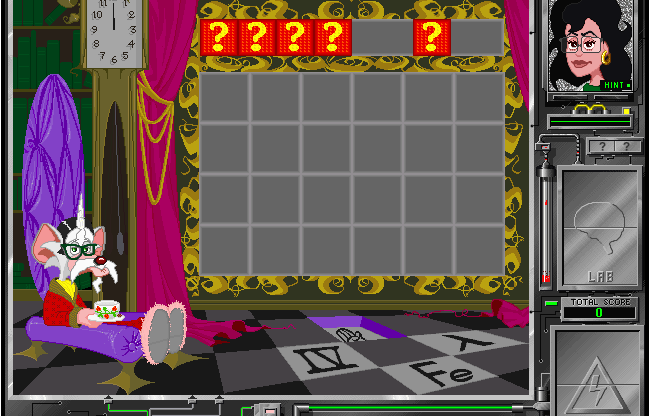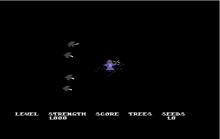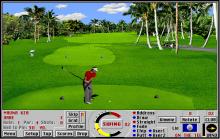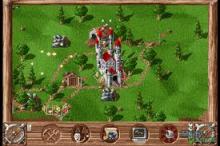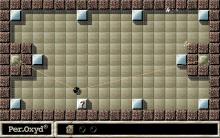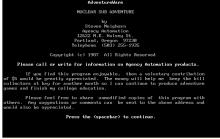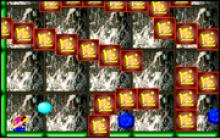The Lost Mind of Dr. Brain
Press Keyboard right side: Alt+Enter keys to switch to full screen game play, and Alt+Enter keys to return.
How to play The Lost Mind of Dr. Brain
Each game uses different controls, most DOS games use the keyboard arrows. Some will use the mouse.
The Lost Mind of Dr. Brain Description
The Lost Mind of Dr. Brain: Rediscover This Classic Puzzle Game from the 90s
Released in 1995, "The Lost Mind of Dr. Brain" stands out as a unique blend of education and entertainment. Developed by Bright Star Technology and published by Sierra On-Line, this game serves as the third entry in the popular Dr. Brain series.
While the previous installments offered semi-free-roaming exploration, this version narrows the focus to a single environment, Dr. Brain's laboratory, where players engage in various brain-teasing puzzles designed to enhance cognitive skills. In this article, we’ll explore the game’s history, mechanics, and educational value, highlighting what makes it a classic game worth revisiting.
The Historical Context of The Lost Mind of Dr. Brain
August 1995 saw the release of "The Lost Mind of Dr. Brain," a pivotal moment for the Dr. Brain series as it introduced significant changes to the gameplay formula. Unlike its predecessors, which allowed players to explore multiple environments, this installment focuses on a single, confined setting—Dr. Brain's laboratory.

This shift aligns with the game’s narrative, where players must assist Dr. Brain in restoring his mind after a lab accident causes it to merge with that of his lab rat. This storyline brings a fresh and engaging twist to the puzzle-solving experience, making it more than just a series of challenges.
Development and Design: A Focus on Education
The game was developed by Bright Star Technology, a company known for its focus on educational content, and published by Sierra On-Line, a leader in adventure and puzzle games during the 1990s. "The Lost Mind of Dr. Brain" was designed with children in mind, offering over 1,000 puzzles that challenge various cognitive skills. The game's educational focus is evident in its design, with each puzzle intended to improve memory, spatial orientation, and logic.
Gameplay Mechanics of The Lost Mind of Dr. Brain
The gameplay in The Lost Mind of Dr. Brain introduces a new approach by limiting the exploratory elements that were a hallmark of earlier titles in the series.

Instead of venturing through various locations, players now navigate puzzles from a central 'map' screen within Dr. Brain's lab. This confined space serves as the setting for a variety of brain-teasing challenges, such as:
- Spatial Orientation: Puzzles require players to manipulate objects in a 3D space, improving their understanding of spatial relationships.
- Memorization: Activities designed to test and enhance memory skills by having players recall patterns and sequences.
- Symbolic Association: Challenges that involve matching symbols and deciphering their meanings, promoting logical thinking.
These gameplay elements are introduced by new characters, including Dr. Brain’s niece, Elena, who guides players through the game’s challenges. The laboratory rat, Rathbone, provides comic relief, adding a lighthearted touch to the otherwise educational content.
The Educational Value of "The Lost Mind of Dr. Brain"
The Lost Mind of Dr. Brain is not just a game; it's a learning tool that blends cognitive development with interactive entertainment. Each puzzle is carefully crafted to engage players while honing their cognitive abilities in areas such as memory, spatial awareness, and problem-solving.
With over 1,000 puzzles to explore, the game is an excellent resource for both children and adults. However, this intense focus on education does mean the game sacrifices some of the humor and exploratory freedom that earlier titles offered. While the setting is more contained, it effectively supports the game’s narrative and educational goals, providing a structured environment for learning.
Characters That Bring the Game to Life
In addition to Dr. Brain, "The Lost Mind of Dr. Brain" introduces several new characters that enhance the gameplay experience:
- Elena: Dr. Brain's niece, who serves as the player's guide throughout the game. Her presence adds a narrative layer to the puzzle-solving experience.
- Rathbone: The laboratory rat whose mind gets mixed with Dr. Brain’s, offering moments of comic relief and contributing to the game’s quirky charm.
These characters, while not as prominent as Dr. Brain himself, play crucial roles in guiding players through the game’s challenges and maintaining the game’s educational focus.
The Lost Mind of Dr. Brain is a prime example of how educational games can combine learning with engaging gameplay. Its unique blend of cognitive challenges and compelling storytelling sets it apart, ensuring that it remains a valuable and enjoyable tool for enhancing mental skills. Whether revisiting this classic or playing it for the first time, "The Lost Mind of Dr. Brain" offers a rich and rewarding experience that continues to resonate with players.
Key Points to Remember:
The Lost Mind of Dr. Brain is the third installment of the educational Dr. Brain series, created and published by Sierra Entertainment.
As in the first two games, Lost Mind features science-related puzzles. Where the previous installments featured a large, semi-free-roaming environment, however, Lost Mind confines the player to one single area (Dr. Brain's laboratory), with puzzles accessed from a central 'map' screen. Similarly, while the previous games' puzzles ranged across a variety of disciplines (both Castle and Island contained memory and word puzzles, as well as puzzles related to art and the sciences), Lost Mind focuses solely on the human brain, with puzzles related to spacial orientation, memorization, and symbolic association.
Due to the restricted game environment, much of the humor that was found in the first two games is missing in Lost Mind; since the player no longer has free reign over an entire island or castle, there is very little to explore, and very little which which to interact.
Between the second and third installments, several new characters have been introduced: Dr. Brain's niece, Elena, is on hand to replace Dr. Brain as host, and also serves as a guide to Dr. Brain's mental pathways. Also, Rathbone, Dr. Brain's laboratory rat, provides what limited verbal humor can be found in the game.
Cheats/Hints/Walkthroughs for The Lost Mind of Dr. Brain
No posted cheats for this game yet.
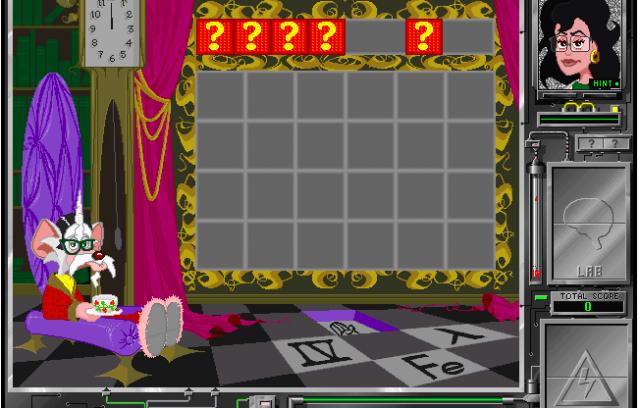
The Lost Mind of Dr. Brain - additional information







